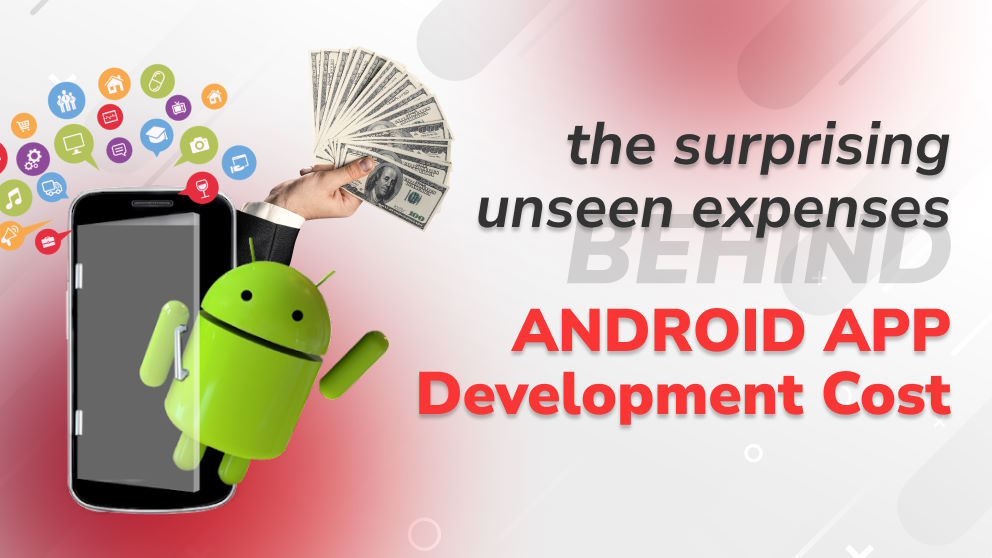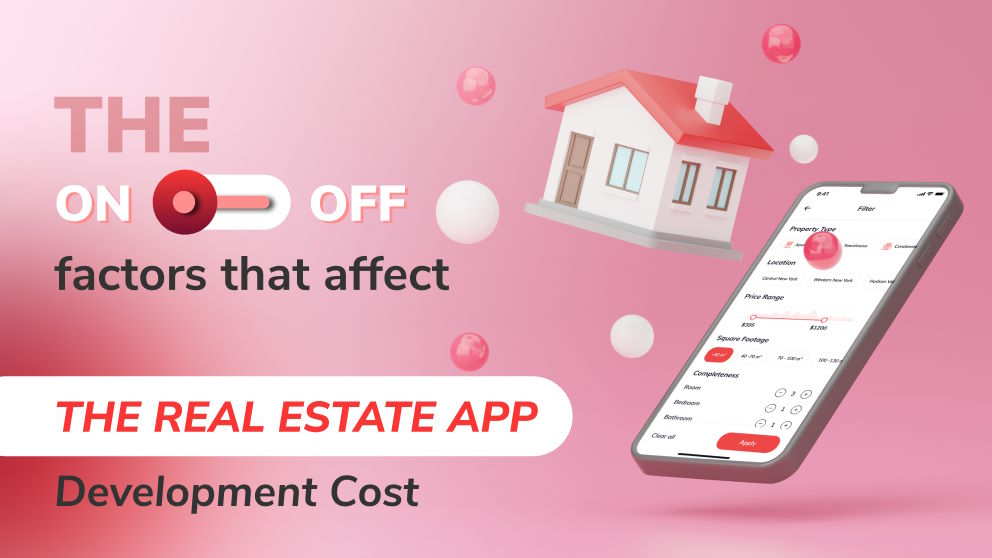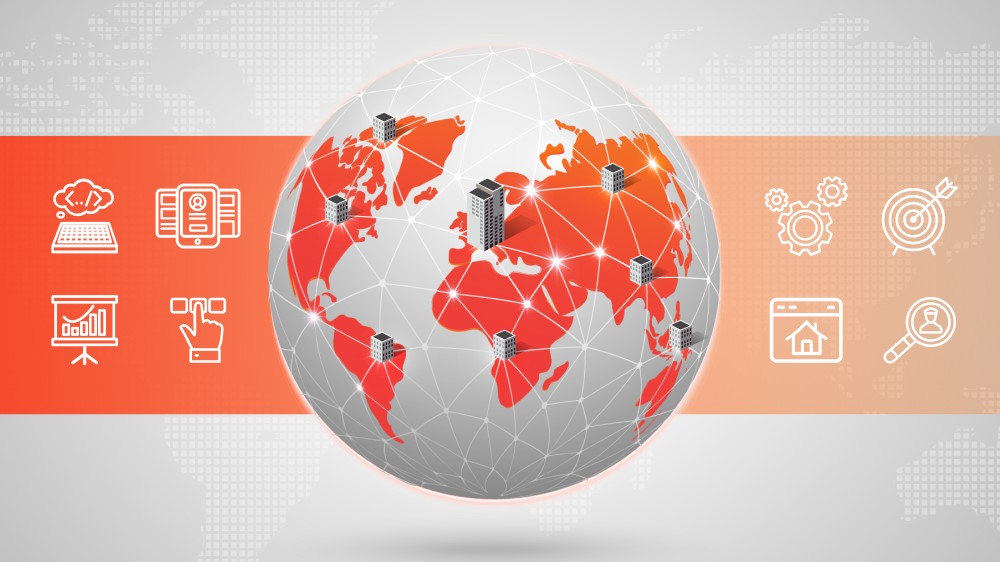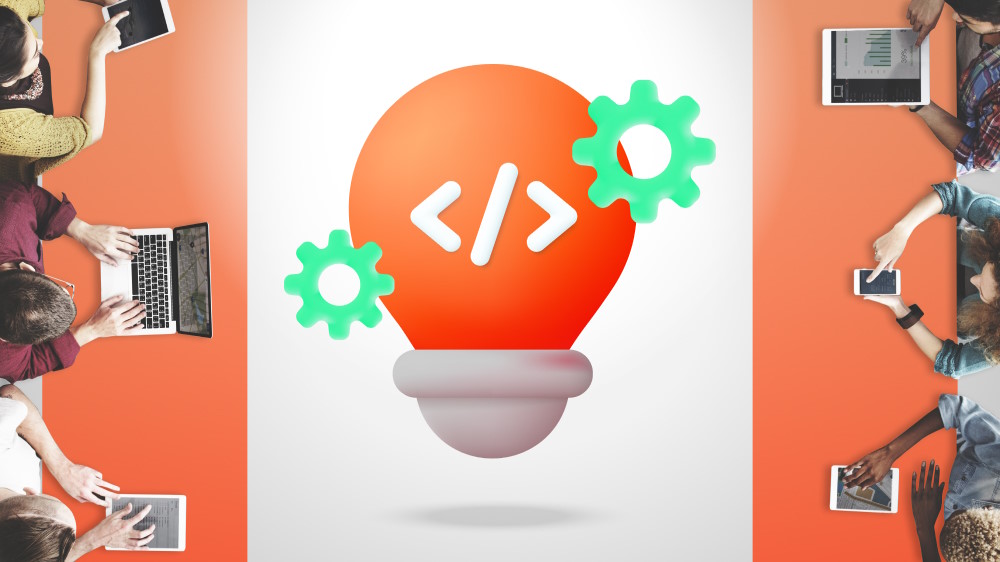How Much Is the Cost to Build a Chatbot?
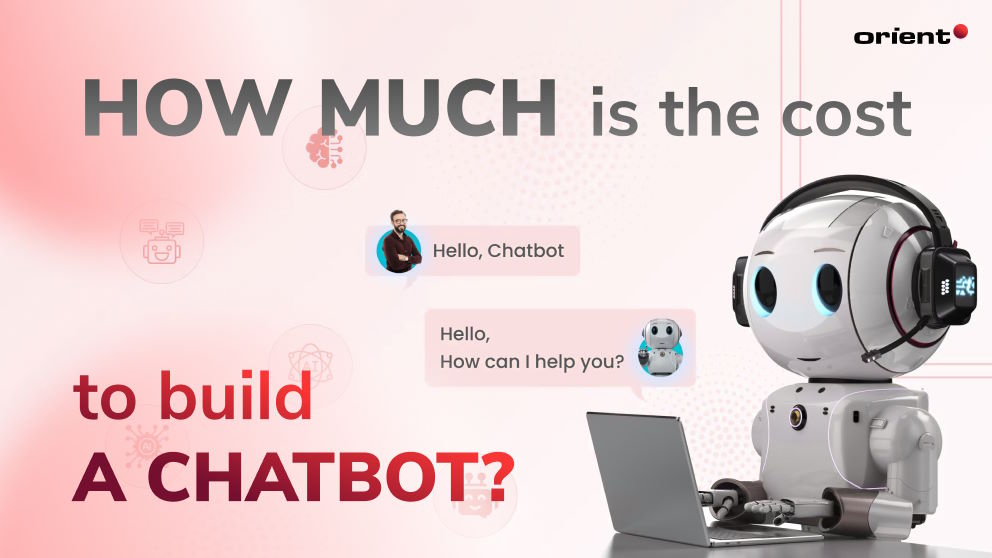
Content Map
More chaptersHave you ever tapped on an ad and received a response right away in your Facebook Messenger? Or have you experienced support from a virtual agent via chat guiding you through a purchase on an e-commerce website? Yes, you are interacting with a chatbot.
Chatbots have become increasingly popular in the modern world. Their applications have soon evolved and exceeded the limitations of a live chat auto-responder to become a comprehensive virtual assistant - that can perform various tasks, such as setting reminders, providing weather updates, or answering general knowledge questions. Some of the chatbot examples that instantly come to mind are Apple’s Siri, Google Assistant, Amazon’s Alexa, ChatGPT, and many more.
It is true that chatbots, especially AI-powered ones, have made our lives easier, of course, at a cost. The common question is, how much does a chatbot actually cost?
What Is Chatbot Technology?

Essentially, the term “chatbot” is a fusion of “chat” and “robot.” It refers to a computer program that processes and simulates human conversations through texts or audio to answer user queries. The internal processes of such bots start with receiving user input, analyzing requests, identifying intents and entities, and end with generating replies. The purpose is to create an experience in which humans can interact with digital devices and platforms as if they were communicating with a real person.
In the mid-1960s, we had ELIZA – the very first ever chatbot – invented by MIT professor Joseph Weizenbaum. ELIZA was built to be a rudimentary program that uses pattern matching and substitution methodology to mimic human-like conversations and interactions.
Fast forward several decades later, and chatbots have become no buzzword but a norm in our digital era. Chatbots have evolved tremendously, opening the door for further advancements in this technology. The inclusion of artificial intelligence (AI), machine learning (ML), natural language processing (NLP), and voice recognition has brought interactive robots to an unprecedented level – in which bots not only automate routine processes but also respond to more complex queries.
The helper bot’s features are no longer confined to ask-and-answer (often known as a simple FAQ chatbot designed to recognize user input and respond to frequently asked questions) or chat automation functionality (e.g., messenger chatbot). Its utilization has been augmented, turning such chatbots into virtual assistants. ChatGPT – an AI-powered chatbot – is a prime example that anyone can immediately relate to. OpenAI’s big hit offers advanced features, such as multi-linguistic translation, topic-based discussions, Q&A sessions, and even writing essays upon request. The groundbreaking record by ChatGPT has once again renewed interest in chatbot technology and underlined the AI takeover.
Chatbot Implementation in the Business Landscape

Modern chatbots are now upgraded with the latest technologies and AI-powered tools like machine learning algorithms, data analysis, predictive analytics, etc. These advancements help chatbots understand human language, learn from past conversations, analyze user behavior, predict needs, and adapt to changing needs – all while reducing human intervention. Moreover, AI-driven agents can cope with multiple conversations at once without delay or fatigue, facilitating 24/7 customer support.
Unlike chatbots during their dawn, contemporary bots have gone beyond simple text-based communication and stepped up to learn customer databases deliver more humanistic experiences, which results in customer satisfaction at a rate equivalent to human interaction – if not better. According to Statista, 64% of businesses strongly believe that chatbots provide their clients with prompt, personalized, and efficient services.
In most cases, a chatbot integrated into websites, social media channels, messaging applications, or other supported platforms can cater to a wide range of purposes across industries. Healthcare, e-commerce, retail, banking, and hospitality are sectors that have successfully leveraged chatbots for customer support automation user engagement.
However, the scope of chatbots extends beyond customer service. In sales and marketing, chatbots can deliver personalized product recommendations, guide the purchase process, and even upsell or cross-sell. In operations, they can automate administrative tasks and streamline workflows. In the realm of HR, chatbots can assist in the onboarding process, answer employee queries, and even aid in recruitment.
Different Approaches to Chatbot Development

Like any other type of software development, chatbot design and development is nothing less than a big investment in terms of money, effort, and resources, not to mention that the endeavor is an ongoing process.
Luckily, there are multiple paths to reach the final destination - an efficient, intelligent chatbot. Depending on the business goals, budgetary conditions, and many other variables, you can choose to conduct your chatbot project in the method you find most suitable and optimal in your given context.
Build a Chatbot from Scratch (In-house)
In-house development is a solid option for those who would like to build a fully customized chatbot unique for specific purposes. Moreover, business owners have complete control over every aspect of the development cycle, from ideation to deployment and maintenance. Along with such authority comes a need for a higher level of technical expertise and a solid team of experienced developers who specialize in chatbot building. AI experts are required as well if you plan to integrate AI technology into your product.
At first sight, do-it-yourself seems to be a cost-efficient approach as you can leverage your own teams and resources. Unfortunately, this may be true or false, depending on the project scale and complexity. It may turn out to be a substantial upfront cost to assemble a project team, especially when you are new to the field. Bear in mind that hiring and retaining AI professionals can also be challenging due to high demand in the market and limited resources. Last but not least, it calls for a significant amount of time and money when you have to design everything from the ground up.
Purchase a Custom Chatbot Solution
The simplest and easiest way is to go for a full-fledged chatbot. To some extent, off-the-shelf solutions are also safer for your budget if you would like to skip development phases and desire rapid deployment.
When you buy a read-made chatbot, you have no worry about cost overrun because the expense is all-rounded from the beginning. You are aware of what you will pay for, and it prepares your budget well ahead.
Certainly, you trade the options of tweaking and customizing functionalities and features for convenience in exchange for a fixed chatbot price. These bots are built with a number of basic features and cultivated for a general user base. You have to agree on what is available within a given framework and also be aware that the pre-built bot may not be fully integrated with your existing systems.
Use Subscription-based Chatbot Platforms
How about cutting to the chase and adding a customized chatbot to your customer service or sales channels without worrying about development, hosting, or maintenance? A subscription-based chatbot platform provides ready-made solutions with advanced features easily integrated into existing systems and configured as needed at some levels.
Businesses of all sizes can lease chatbot software with ease, as it provides a cost-effective solution with minimal upfront investment and a predictable yearly or monthly fee. Additionally, these rented platforms come with support services and regular updates to ensure the chatbots remain up-to-date and efficient. Businesses that crave nothing more than a standard bot to handle chat automation and customer support tasks can save much money as there are many different chatbot pricing models offered for selection.
Leverage Pre-built Tools
Low-code or no-code solutions are also a good idea to build your own chatbot with little technical know-how and experience required. Currently, various platforms (such as Chatfuel, Botsify, and Flow XO) offer drag-and-drop features and pre-built templates that enable even non-tech or novice teams to craft a user-friendly and functional chatbot – mostly simple one.
This approach is mostly suitable for those who are on a tight budget or require a simple chatbot without advanced features such as AI integration. However, it is hard to develop chatbots with advanced features or customization options.
Outsource Custom Chatbot Development
If building a chatbot from scratch is overwhelming for most companies that are concerned about the cost and complexity of in-house development or are limited by available resources, take a shortcut – outsourcing. In this path, businesses with little to no resources in terms of expertise, experience, or even personnel are able to develop a highly customized solution based on their unique business needs. Of course, with the aid of the right outsourcing partner. This is a good option when you aim at a full-fledged chatbot solution, not an MVP (Minimum Viable Product) or a basic one.
From design to deployment and maintenance, you can choose to delegate your ideas or processes to a professional chatbot builder whose team specializes in this field. The right partner will work your problem out and tailor solutions accordingly.
Outsourcing chatbot development is renowned for its adaptability and potential for growth. More specifically, there are various outsourcing models and types of services that adapt to the needs and requests of even the most discerning clients. You can ask for additional manpower through a dedicated team or IT staff augmentation services if that is your current obstacle.
Moreover, outsourcing can reduce upfront costs as you only have to pay for the agreed-upon services, and the ongoing maintenance costs will be handled by the development team. This can free up resources and enable you to focus on other aspects of your business while still having a chatbot developed at your disposal.
Chatbot Pricing: How Much Does It Cost to Develop a Chatbot?

If custom development is what you are heading for, you should weigh the pros and cons of opting for outsourcing or building your product from scratch. Of course, either way, it serves the same business goals, and they hinge on how much you are willing to spend.
What Factors Can Cause the Chatbot Cost to Fluctuate?
All the figures around this topic are still estimations, and there is no right or wrong answer when it comes to calculating the chatbot development cost. Chatbots cost a fortune or a mere amount? It is a result of several factors that impact the entire development process and, in turn, the cost.
In general, chatbot prices possibly range from approximately $5,000 - $20,000 per month for developing a custom chatbot in-house. Bear in mind that this range is not fixed, and it can jump to $100,000 or even more for complex chatbot features and extensive customization. So, any cost estimate is only for reference.
Chatbot Type
Overall, chatbots are broken down into two primary categories: Rule-based and self-learning bots. And the chatbot costs vary heavily on the type you choose.
The former relies on predetermined rules and decision trees to communicate with users. These scripted bots can only perform tasks or answer specific commands that they have been programmed to process. If your request falls out of their understanding, they will either give a default response or fail to respond at all. A simple chatbot like this is often much lower in price – around $5,000 to $15,000 per month.
On the other hand, the latter utilizes AI, ML, and NLP techniques to learn from user interactions and constantly improve over time. Such AI chatbots are capable of learning from past Interactions, making predictions, handling complex queries, understanding context, and delivering more personalized responses. Thus, they are sophisticated, providing a more human-like experience. For this, they require more resources to develop and train, which results in a larger investment.
Chatbot Features, Scale & Complexity
Each chatbot can be built to serve different purposes than only handle message replies. Alternatively, they can be created with multiple functions and capabilities that are more advanced to align with your business objectives, such as a distributing chatbot, a lead generation bot, an e-commerce chatbot, etc. In addition to functionality, a chatbot can be built to fit the business scale. For example, a basic chatbot used for an online storefront will be different from enterprise chatbots.
Obviously, the complexity and scale of a chatbot project will add to the cost. More complicated features (e.g., data analysis algorithms or integrations with existing systems) require more development time and more professionals on the team, which ultimately increases the budget.
Therefore, the cost to build a chatbot with standard features (Roughly $5,000 to $30,000) will be completely different from the expenditure of developing a so-called ChatGPT alternative (Estimated to be around $30,000 and $50,000 or more).
Tech Stacks & Integration
Two influencing factors that shape the development costs of custom chatbots are the technology stack and integrations.
The tech stack includes programming languages, tools, hosting services, application programming interfaces (APIs), development frameworks, and so on. For instance, Python is a major programming language for building AI chatbots, while Dialogflow or Wit.ai are popular frameworks used to create NLP models. The more sophisticated and robust tech stack you use, the higher your budget gets. Similarly, integrations with existing systems or third-party services can also enhance a chatbot’s capabilities and performance but will also add to the overall cost.
Development Length
The factor of time poses a great influence on the total expenditure as well. The cost may ramp up or down depending on how long it takes for a team to wrap up a chatbot project. The longer development time may incur more expenses, which can be calculated based on an hourly rate or fixed price. Therefore, lots of tech companies choose to hire offshore developers to leverage the salary differences between countries and get competitive pricing.
Maintenance, Updates, and Support
The initial cost of chatbot development is just the beginning. Like other types of software, chatbots require maintenance, updates, and support services to remain running smoothly and performing optimally over time. Thus, this asks for a significant amount of ongoing expenses to keep unlimited active bots alive. Therefore, it is essential to consider these long-term costs when calculating the budget for developing a chatbot if you do not want to be taken by surprise.
Tips to Reduce the Chatbot Development Costs
Not to eliminate the scenario where all your pricing plans turn out to be a misfire, you can take into account the following tips to ensure that your chatbot development costs are kept minimal:
Start Small
The simplest way to keep your spending under control is to go slow in every step. You can begin with a basic version of your chatbot to test bot performance toward handling core functions. Once it works well, you can plan to add more features gradually.
Know Your Needs and Plan Ahead
Make sure you have finalized the idea for your future chatbot, its requirements, and why you need one in the first place before proceeding to the development phase. Any uncertainty before or during the SDLC will cost you dearly. A solid foundation in place will help you avoid additional changes or persisting doubts, which are time-consuming and expensive.
Above that, planning also enables the development team to portray their product in a specific cost range and, if necessary, create an alternative plan to work with a limited budget. This also plays an integral part in deciding which approaches to choose: Either in-house development, using chatbot platforms/builders, or outsourcing.
Start a Free Trial
If you opt for a third-party chatbot maker, then you can look for a free trial option. Almost all custom chatbot development tools offer free trials that let you get a feel for what it is like to build your bot on their platform. The trial version gives you the same features as the premium version but for a limited time; this way, you can evaluate if the chatbot maker works for your business needs. By testing the platform before purchasing its services, you can make informed decisions without spending money upfront.
Keep It Simple
Sometimes, business owners may ask for more than what they actually need in a chatbot solution. Miscalculation at this point leads to cost overrun as a result of paying for features that are not required or beneficial for the business. Keep in mind that each added feature increases development time, not to mention the manpower, which in turn adds to the overall cost. Therefore, you need to focus on the essentials and add more complexity later when really needed. In this way, you will lay less pressure on your budgetary conditions and get the most from your bot at the end of the development cycle.
Consider Outsourcing

As mentioned above, outsourcing is one of the choices for approaching the chatbot development endeavor. In terms of cost-saving, outsourcing becomes the very first choice due to the range of benefits this business strategy has to offer. Firstly, you can leverage end-to-end services and pay as you go, thus avoiding the need for expensive infrastructure and tech support. The second most important advantage of outsourcing is that it lets you work with skilled professionals from across the globe who can provide robust solutions within your budget.
Above all, when outsourcing your chatbot project, you can set the budget and KPIs beforehand, so there are no surprises in the end. This way, you can ensure that your project is finished on time and within the specified budget. Moreover, outsourcing allows for scalability, meaning you can easily add or remove features as needed to meet your changing business objectives without blowing up your budget. Plus, you can also seek guidance from seasoned professionals or service providers who specialize in chatbot development.
If you outsource, your first move is to find and partner with the right intermediary company – Orient Software. We are a Vietnam-based IT outsourcing company specializing in custom software development (Including chatbots) and IT staffing services. With branches in different tech hubs around the world, Orient Software has become a trustworthy partner for many businesses and organizations across industries. Contact us now for further discussion.

